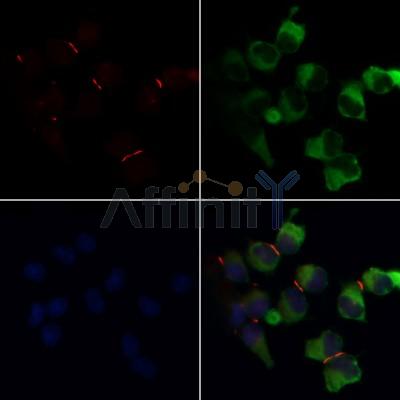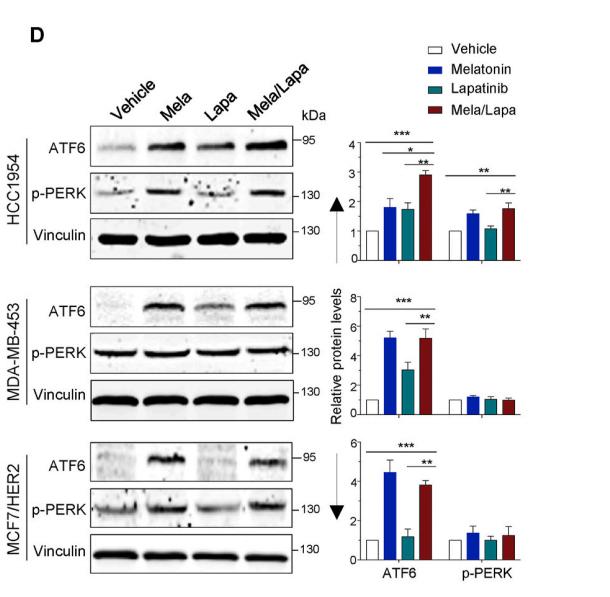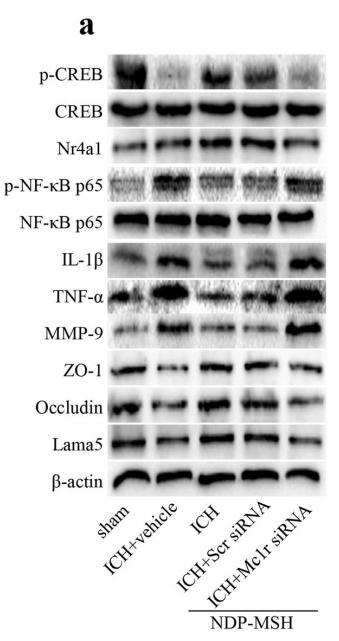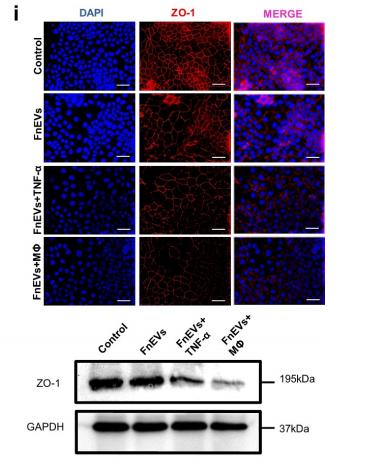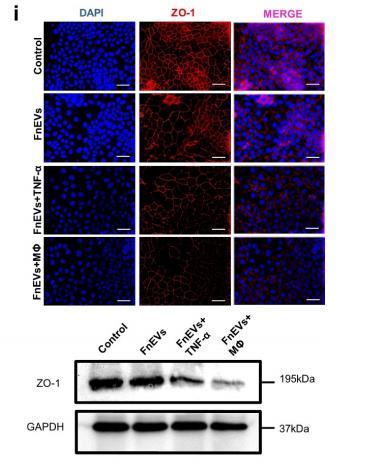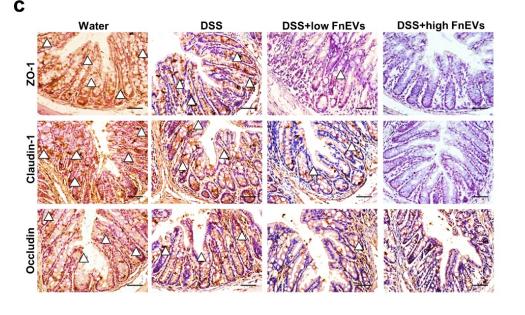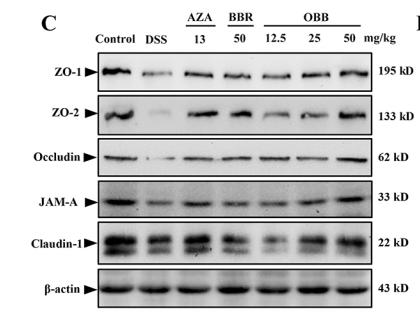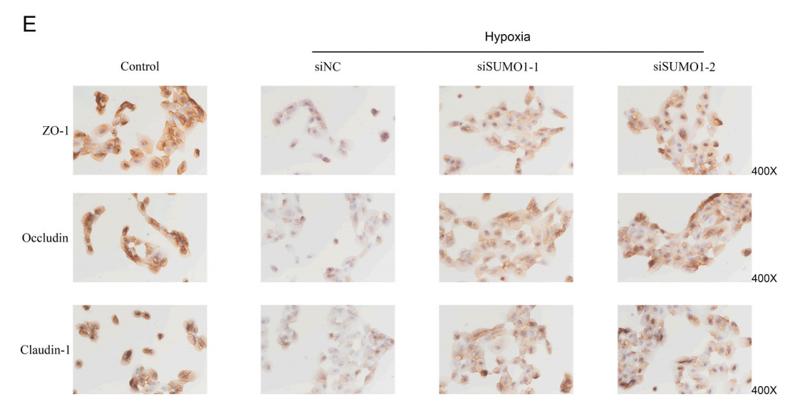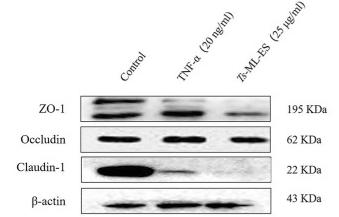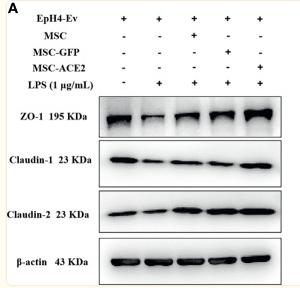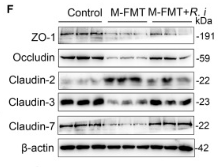产品描述
*The optimal dilutions should be determined by the end user.
*Tips:
WB: 适用于变性蛋白样本的免疫印迹检测. IHC: 适用于组织样本的石蜡(IHC-p)或冰冻(IHC-f)切片样本的免疫组化/荧光检测. IF/ICC: 适用于细胞样本的荧光检测. ELISA(peptide): 适用于抗原肽的ELISA检测.
引用格式: Affinity Biosciences Cat# AF5145, RRID:AB_2837631.
展开/折叠
Tight junction protein 1; Tight junction protein ZO-1; Tight junction protein ZO1; TJP1; zo-1; Zo1; ZO1_HUMAN; Zona occludens 1; Zona occludens 1 protein; Zona occludens protein 1; Zonula occludens 1 protein; Zonula occludens protein 1;
抗原和靶标
The alpha-containing isoform is found in most epithelial cell junctions. The short isoform is found both in endothelial cells and the highly specialized epithelial junctions of renal glomeruli and Sertoli cells of the seminiferous tubules.
- Q07157 ZO1_HUMAN:
- Protein BLAST With
- NCBI/
- ExPASy/
- Uniprot
MSARAAAAKSTAMEETAIWEQHTVTLHRAPGFGFGIAISGGRDNPHFQSGETSIVISDVLKGGPAEGQLQENDRVAMVNGVSMDNVEHAFAVQQLRKSGKNAKITIRRKKKVQIPVSRPDPEPVSDNEEDSYDEEIHDPRSGRSGVVNRRSEKIWPRDRSASRERSLSPRSDRRSVASSQPAKPTKVTLVKSRKNEEYGLRLASHIFVKEISQDSLAARDGNIQEGDVVLKINGTVTENMSLTDAKTLIERSKGKLKMVVQRDERATLLNVPDLSDSIHSANASERDDISEIQSLASDHSGRSHDRPPRRSRSRSPDQRSEPSDHSRHSPQQPSNGSLRSRDEERISKPGAVSTPVKHADDHTPKTVEEVTVERNEKQTPSLPEPKPVYAQVGQPDVDLPVSPSDGVLPNSTHEDGILRPSMKLVKFRKGDSVGLRLAGGNDVGIFVAGVLEDSPAAKEGLEEGDQILRVNNVDFTNIIREEAVLFLLDLPKGEEVTILAQKKKDVYRRIVESDVGDSFYIRTHFEYEKESPYGLSFNKGEVFRVVDTLYNGKLGSWLAIRIGKNHKEVERGIIPNKNRAEQLASVQYTLPKTAGGDRADFWRFRGLRSSKRNLRKSREDLSAQPVQTKFPAYERVVLREAGFLRPVTIFGPIADVAREKLAREEPDIYQIAKSEPRDAGTDQRSSGIIRLHTIKQIIDQDKHALLDVTPNAVDRLNYAQWYPIVVFLNPDSKQGVKTMRMRLCPESRKSARKLYERSHKLRKNNHHLFTTTINLNSMNDGWYGALKEAIQQQQNQLVWVSEGKADGATSDDLDLHDDRLSYLSAPGSEYSMYSTDSRHTSDYEDTDTEGGAYTDQELDETLNDEVGTPPESAITRSSEPVREDSSGMHHENQTYPPYSPQAQPQPIHRIDSPGFKPASQQKAEASSPVPYLSPETNPASSTSAVNHNVNLTNVRLEEPTPAPSTSYSPQADSLRTPSTEAAHIMLRDQEPSLSSHVDPTKVYRKDPYPEEMMRQNHVLKQPAVSHPGHRPDKEPNLTYEPQLPYVEKQASRDLEQPTYRYESSSYTDQFSRNYEHRLRYEDRVPMYEEQWSYYDDKQPYPSRPPFDNQHSQDLDSRQHPEESSERGYFPRFEEPAPLSYDSRPRYEQAPRASALRHEEQPAPGYDTHGRLRPEAQPHPSAGPKPAESKQYFEQYSRSYEQVPPQGFTSRAGHFEPLHGAAAVPPLIPSSQHKPEALPSNTKPLPPPPTQTEEEEDPAMKPQSVLTRVKMFENKRSASLETKKDVNDTGSFKPPEVASKPSGAPIIGPKPTSQNQFSEHDKTLYRIPEPQKPQLKPPEDIVRSNHYDPEEDEEYYRKQLSYFDRRSFENKPPAHIAASHLSEPAKPAHSQNQSNFSSYSSKGKPPEADGVDRSFGEKRYEPIQATPPPPPLPSQYAQPSQPVTSASLHIHSKGAHGEGNSVSLDFQNSLVSKPDPPPSQNKPATFRPPNREDTAQAAFYPQKSFPDKAPVNGTEQTQKTVTPAYNRFTPKPYTSSARPFERKFESPKFNHNLLPSETAHKPDLSSKTPTSPKTLVKSHSLAQPPEFDSGVETFSIHAEKPKYQINNISTVPKAIPVSPSAVEEDEDEDGHTVVATARGIFNSNGGVLSSIETGVSIIIPQGAIPEGVEQEIYFKVCRDNSILPPLDKEKGETLLSPLVMCGPHGLKFLKPVELRLPHCDPKTWQNKCLPGDPNYLVGANCVSVLIDHF
种属预测
score>80的预测可信度较高,可尝试用于WB检测。*预测模型主要基于免疫原序列比对,结果仅作参考,不作为质保凭据。
High(score>80) Medium(80>score>50) Low(score<50) No confidence
研究背景
TJP1, TJP2, and TJP3 are closely related scaffolding proteins that link tight junction (TJ) transmembrane proteins such as claudins, junctional adhesion molecules, and occludin to the actin cytoskeleton. The tight junction acts to limit movement of substances through the paracellular space and as a boundary between the compositionally distinct apical and basolateral plasma membrane domains of epithelial and endothelial cells. Necessary for lumenogenesis, and particularly efficient epithelial polarization and barrier formation (By similarity). Plays a role in the regulation of cell migration by targeting CDC42BPB to the leading edge of migrating cells. Plays an important role in podosome formation and associated function, thus regulating cell adhesion and matrix remodeling. With TJP2 and TJP3, participates to the junctional retention and stability of the transcription factor DBPA, but is not involved in its shuttling to the nucleus (By similarity).
Phosphorylated at tyrosine redidues in response to epidermal growth factor (EGF). This response is dependent on an intact actin microfilament system. Dephosphorylated by PTPRJ.
Cell membrane>Peripheral membrane protein>Cytoplasmic side. Cell junction>Tight junction. Cell junction. Cell junction>Gap junction. Cell projection>Podosome.
Note: Moves from the cytoplasm to the cell membrane concurrently with cell-cell contact (PubMed:7798316). At podosomal sites, is predominantly localized in the ring structure surrounding the actin core (PubMed:20930113).
The alpha-containing isoform is found in most epithelial cell junctions. The short isoform is found both in endothelial cells and the highly specialized epithelial junctions of renal glomeruli and Sertoli cells of the seminiferous tubules.
Homodimer. Forms heterodimers (via the PDZ2 domain) with TJP2 and TJP3. Interacts with OCLN, CALM, claudins, CGN/cingulin, CXADR, GJA12, GJD3 and UBN1. Interacts (via ZU5 domain) with CDC42BPB and MYZAP. Interacts (via PDZ domain) with GJA1. Interacts (via PDZ domains) with ANKRD2. Interacts with BVES (via the C-terminus cytoplasmic tail) (By similarity). Interacts with HSPA4 and KIRREL1 (By similarity). Interacts with DLL1 (By similarity). Interacts with USP53 (via the C-terminal region) (By similarity). Interacts (via ABR region) with F-actin. Interacts with DNMBP (via C-terminal domain); required for the apical cell-cell junction localization of DNMBP.
The 244-aa domain between residues 633 and 876 is the primary occludin (OCLN)-binding site and is required for stable association with the tight junction (PubMed:9792688).
The C-terminal region (residues 1151-1372) is an actin-binding region (ABR) that interacts directly with F-actin and plays an important role in the localization of TJP1 at junctions (PubMed:9792688, PubMed:12354695, PubMed:20930113). The ABR is also required for the localization to puncta at the free edge of cells before initiation of cell-cell contact (PubMed:12354695). The ABR is also necessary for TJP1 recruitment to podosomes (PubMed:20930113).
The second PDZ domain (PDZ2) mediates homodimerization and heterodimerization with TJP2 and TJP3 (PubMed:9792688, PubMed:17928286).
Belongs to the MAGUK family.
研究领域
· Cellular Processes > Cellular community - eukaryotes > Adherens junction. (View pathway)
· Cellular Processes > Cellular community - eukaryotes > Tight junction. (View pathway)
· Cellular Processes > Cellular community - eukaryotes > Gap junction. (View pathway)
· Human Diseases > Infectious diseases: Bacterial > Vibrio cholerae infection.
· Human Diseases > Infectious diseases: Bacterial > Epithelial cell signaling in Helicobacter pylori infection.
· Human Diseases > Infectious diseases: Bacterial > Salmonella infection.
文献引用
Application: WB Species: human Sample: Caco2 cells
Application: IF/ICC Species: human Sample: Caco2 cells
Application: IHC Species: mouse Sample: colon
限制条款
产品的规格、报价、验证数据请以官网为准,官网链接:www.affbiotech.com | www.affbiotech.cn(简体中文)| www.affbiotech.jp(日本語)产品的数据信息为Affinity所有,未经授权不得收集Affinity官网数据或资料用于商业用途,对抄袭产品数据的行为我们将保留诉诸法律的权利。
产品相关数据会因产品批次、产品检测情况随时调整,如您已订购该产品,请以订购时随货说明书为准,否则请以官网内容为准,官网内容有改动时恕不另行通知。
Affinity保证所销售产品均经过严格质量检测。如您购买的商品在规定时间内出现问题需要售后时,请您在Affinity官方渠道提交售后申请。产品仅供科学研究使用。不用于诊断和治疗。
产品未经授权不得转售。
Affinity Biosciences将不会对在使用我们的产品时可能发生的专利侵权或其他侵权行为负责。Affinity Biosciences, Affinity Biosciences标志和所有其他商标所有权归Affinity Biosciences LTD.


